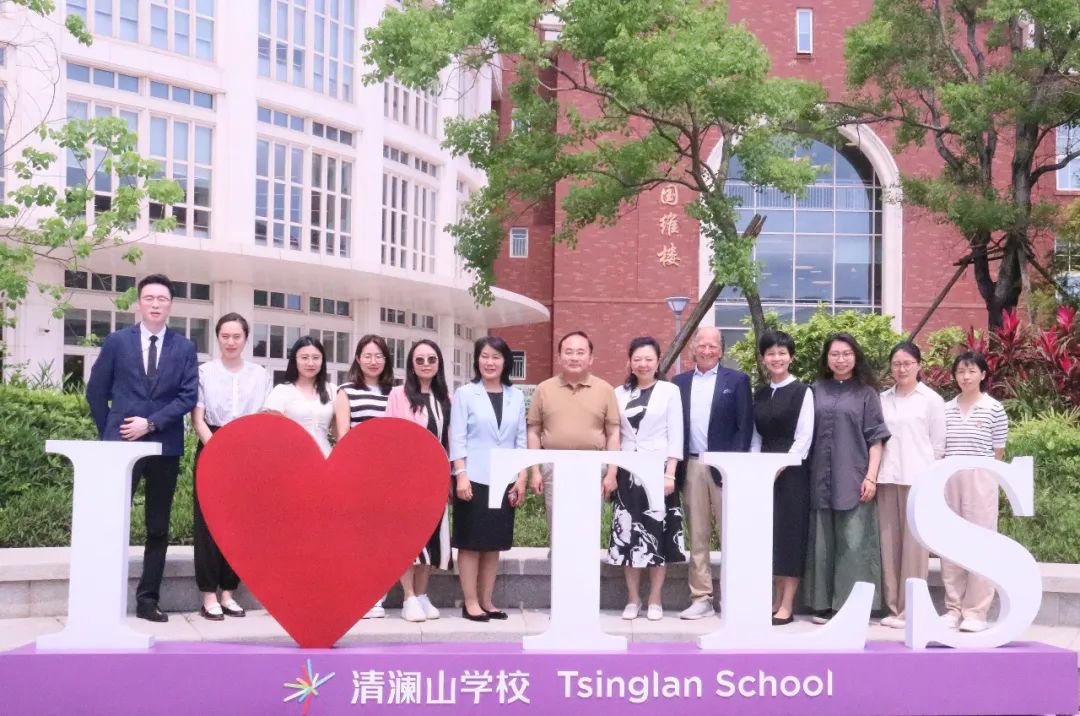2023-12-18发布于广东
清澜大师课
清澜山学校2023-2024年度第三期大师课圆满结束了!此次大师课中,4位老师精心准备、细心打磨,在自己的专业领域上大放光彩,诠释了教育者的爱与责任,展示出了高超的教学艺术和良好的教学素养。
范彦书(初中部人文)
《汉武帝巩固大一统王朝》
汉朝的大一统任务指引:
本课是基于部编版7上教材,第12课 汉武帝巩固大一统王朝 第14课沟通中外文明的“丝绸之路”的教学活动,同学们两人一组,在教师的指导下,将这一时期碎片化的图片和文字资料内容粘贴到相应区域,做到史料内容的有序归类。

教师在活动中,创设了汉武帝的“烦恼”这一项,大多数学生无法推断出,金缕玉衣,和亲政策以及郡国并行制这几个是汉武帝的“烦恼”,出现粘贴失误,拿金缕玉衣来说,学生认为是汉武帝大一统时代经济方面的一个表现,但教师通过引导学生了解汉武帝即位时遭遇的各类问题,指出金缕玉衣为诸侯王享用的,耗费财力,导致了汉武帝的“烦恼”,最后用推恩令的方式削弱诸侯的实力,这样学生对推恩令的概念和背景就有了更深入的认知。

人物形象解读:
教师引用了汉代画像砖中的胡人形象,学生对这幅图片感觉很陌生,教师从该文物中人物的长鼻子、帽子及手中携带物品入手,提醒学生这个人可能是来中国做生意的胡人,使学生对丝绸之路和汉代对外交流也有初步的认知。

总结:
教师从汉武帝的烦恼导入,将其开创的大一统时代分为政治、经济、军事、文化、教育、民族关系和对外交流几个方面,以学生为中心,让学生将相关史料进行归纳整理,教师辅助和订正学生的学习成果,学生做完整个活动后,会对该时代有初步的了解和认知,这也为后面丝绸之路的学习做了铺垫。
Roselyn Baronia
(高中部计算机科学)
《Assessor and Mutator Methods in Java》
A master class was conducted last December 6, 2023, with fifteen students at A405 for AP Computer Science A class focusing on the use of void and non-void methods that might have or have not parameters. The class was conducted using the EIPM (Explore, Introduce, Practice, Make) approach where students were provided with conceptual grounding of the topic and then guided to solve related problems and finally, they were exposed to solving the problems on their own.

Activating student’s prior knowledge is important for this class so students can master the use of certain terminologies. To do so, a gamified review was conducted followed immediately by a brief warm-up scenario about a bank which intends to let the students ponder on what data should they allow to be accessed, modified, or allow to be both accessible and modifiable.

Explore
When introducing object-oriented programming concepts to students, I found it essential to cover the concept of such as encapsulation and this is where the new topic formally begins. Accessor and mutator methods, also known as getters and setters, are core components of encapsulation in Java. These methods allow students to understand how to control access to private variables within objects and emphasize the principle of data abstraction.
A presentation was shown illustrating how private variables protect data integrity and allow controlled access to data through accessor and mutator methods. Also at this stage, the naming conventions were introduced commonly used for accessor and mutator methods. For accessors (getters), the method name usually starts with "get" followed by the name of the variable it retrieves. For mutators (setters), the method name begins with "set" followed by the name of the variable it modifies. It was also at this point that the importance of using meaningful and intuitive names for better code readability was reinforced. An example was also presented to the students to help them grasp the concept.
Investigate
The students were asked to open their interactive book and investigate a code. Using the Java visualizer tool, the control flow was demonstrated to the students focusing on implementing the accessor and mutator methods in Java. An example was shown in a "Person" class with a private variable "name" and the process of creating a getter and a setter method for that variable was also demonstrated.
public class Person {
private String name;
public String getName() {
return name;
}
public void setName(String newName) {
name = newName;
}
}
During this stage thought-provoking questions were asked to guide the students to think critically. They were also encouraged to ask questions and actively participate in the demonstration.
Practice
After the code demonstration, the class had hands-on practice exercises using the compiler embedded in the online book or to manually write a code using the worksheets found on Teams to solidify their understanding. These differentiated tasks are meant for students who are already comfortable with IDE while the latter task is more for students who are at the beginner stage of coding. The programming challenges require implementing accessor and mutator methods in a pet shop scenario. This exercise will give them the opportunity to reinforce their knowledge and apply the concepts in a different context.
It is also during this stage that the students were exposed to College Board sample questions and how to strategically find the right answer. They also answer a few sample questions found in the book.
Make
At this stage students go to their pairs which were previously set and work on designing a Java class to manage data in their community. Students, before this class, already brainstorm for what activity (e.g., tracking events in their home community) they wish to do. Durig this time, the students formally building the ‘class’ where they write the class name, its attributes, constructors, and the getter and setter methods. During this time, I walk around and pay attention to misconceptions that might arise during this activity. I also highlighted best practices following what each pair had been coding.
Wrap-Up
Due to time constraints, the exit ticket prepared at the College Board – three multiple-choice questions and one free-response questions, were not answered in the class and became their homework. Assessment of the learning objective happened through code reviews and discussions. Students were encouraged to share their approaches, discuss different solutions, and provide feedback to one another. This collaborative environment promotes active learning and helps students improve their coding skills.
To sum it up, this master class focused on conceptual understanding, provide hands-on practice, and emphasize real-world examples and best practices. With a solid foundation in encapsulation, students will be well-equipped to design robust and maintainable Java programs and will be more prepared for the upcoming external exam.
许土花(双语部数学)
《数与形》

《数与形》教学设计反思和学生表现:
以学生微课谈古今数学家杨辉三角寻找规律和华罗庚“数与形”的诗句引入本节课的主题,让数学富有诗意并有故事,不再乏味。“数 ”与“形 ”是数学学习中非常重要的两个领域,“形中有数 ”、“数中有形 ”,所以我们研究数学问题的时候经常会数形结合,让学生通过观察、发现、归纳图形中隐藏的数的规律。同时,将例题进行改编,让问题变得更加开放,引发学生自主探究,以挑战性问题,激发学生的学习兴趣,培养学生学习的主动性和对问题的探究意识,通过观察发现图形中隐藏的规律。整堂课师生对话,生生互动,课堂气氛活跃,学生参与度高。新知探究,习“方法”先以“形”到“数”,让学生观察图形,说一说它们之间有什么规律,请学生用数或式子表示发现的规律。引导学生从不同的角度,探究规律,培养学生发散性数学思维。在应用规律解决问题的过程中,鼓励学生充分地动手、动口、动脑,顺利解决问题,活动探索乐趣。学生利用数形对照,说出图的变化规律,并探究对应的数的规律,从而利用发现的规律解决问题。通过多样的教学手段,小组竞赛激励,调动学生的积极性。教师语言亲切,注重师生互动,力求营造积极向上轻松愉悦的课堂氛围。

司艳平(双语部语文)
《坚守的力量——<孟子>三章情境整合阅读》
司艳平老师的语文课,为大家展示的是《孟子》三章的思辨性任务式整合课,课堂主题为“坚守的力量”。

整堂课设计的驱动总议题是“我们应该以怎样的态度和方式对待先哲的思想呢?”总议题的提出立足学情,以学生对孟子观点提出的疑惑作为授课起点,这样的设计真正做到了以生为本。
三个任务层递推进,渐露峥嵘。第一个任务为辩方法,运用同类信息整合法将《得道多助,失道寡助》《富贵不能淫》《生于忧患,死于安乐》里的排比句进行整合,学生辩论:“孟子善用排比说理,有利于增强观点的说服力。”“孟子善用排比说理,不利于增强观点的说服力。”在辩论中,感知孟子论辩的特色。
第二个任务为论学说,指引学生运用思辨思维,评价孟子观点。三个话题分别从三篇文章中来,学生侃侃而谈,联系实际,谈出自己的看法。因为时间问题,学生只交流了其中一个,有点可惜。
第三个任务为鉴后世,运用叙利亚总统来华访问以及网红博主在伊拉克拍摄的视频作为支架,以给视频留言的方式作为活动,明确中国自古以来“仁”的思想,也进一步感知孟子思想的源远流长。

经由这堂语文课,树立学生文化自信的意识,并且在春风化雨之中晕染先哲思想的精神内核,进而指导学生的人生。
第三期大师课的顺利进行给本年度大师课撰写了一笔华丽篇章,本期大师课让我们受益良多,让我们知道,学习也能是一种快乐的享受。
敬请期待下一期大师课的到来。

声明:本文内容为国际教育号作者发布,不代表国际教育网的观点和立场,本平台仅提供信息存储服务。
每天限50个名额
全国500所国际学校大全 / 3分钟匹配5-8所 / 1年名校升学备考托管服务





